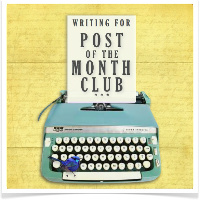We were the last to arrive after getting lost and feeling like our faces were going to fall off before we found our way. When we got there, our friends were already out on a pond (or small-ish lake) that had been completely frozen over.
It was Marlon’s first time out on the ice this winter. His skates are actually ice hockey skates; they were one of the last few pairs left at the sports store. He’s skated before (in Canada, not just in Megamall!) so he took to it so much faster than I did. Naturally.
Heading out into the frozen North, I began to comprehend the full extent of the Dutch love for skating.
Aside from towering over short people at standing-room concerts, it appears that these infuriatingly long Dutch legs are made for one other thing: speed skating. When the web of waterways that crisscrosses the entire nation freezes over, the Dutch put on their skates and do what they call a “tour.” That means hurtling through double-digit kilometers of frozen countryside…
… in goggles and Mandex.
Yup, they take it seriously here. It’s pretty amazing.
If I had stronger legs, I would have loved to attempt a tour. The countryside is beautiful.
But, helaas, my tropical limbs couldn’t even clock in one kilometer before they started aching in places that I had never thought existed. ”That’s right, you don’t use those muscles when you’re lying on the beach,” teased my friend Leslie.
I could have used one of these sleds. They looked more my speed.
So we just kept to our little pond with the babies. Speaking of babies… cuteness break! Aren’t they just adorable? *melt*
Even these little tots were faster on the ice then we were.
And those who weren’t, got pulled along on sleds or wagons. I love how handmade and brand-less their toys look.
Aside from babies, there were quite a few dogs out on the ice too, adding to the cuteness factor.
I think they can sense that Marlon is a dog person; they immediately go for him.
Hot drinks are essential to stay warm, and for that overall cozy-happy-fun atmosphere.
And of course, everything’s better with friends. Especially friends with matching skates (cheapskates, literally)…
friends who know how to have fun…
Thank you, Holland. This is another awesome memory for the books. Till next winter!










































